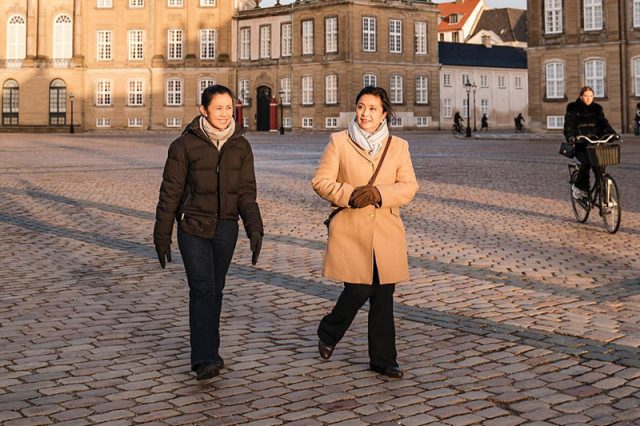
Former vice president Leni Robredo highlighted the walkability of another foreign city anew on Thursday.
The Angat Buhay NGO chair shared that she and her eldest, Aika Robredo, decided to do “short side trips” to the Nordic capitals after her speaking engagement in Norway.
Leni went to Norway on January 26, where she was among the speakers at the University Of Oslo’s seminar titled the “Integrity and International Collaborations in an Open Science Environment.”
It tackled integrity challenges in international collaborations in different aspects like research, capacity building, and other developmental and innovative purposes.
Leni gave a talk titled “Collaboration and Development: Perspectives from the Ground.”
After her engagement, the mother-and-daughter duo explored Nordic capitals like Norway’s Oslo and Denmark’s Copenhagen.
According to the lawyer, she has “always been curious why the Nordic countries have been performing so well and why the Danish people are considered one of the happiest.”
“We did a walking tour and the first question I asked our tour guide was: ‘Why are you considered the happiest people’?” Leni recounted on Facebook.
“His answer was: quality of life. I asked him if he doesn’t feel like they’re paying too much taxes. And he said that they don’t mind paying too much because they feel that government spends their money well and their social services are excellent,” she added.
Leni then shared what she got from their conversation, which mainly revolved around the walkability of the Danish city.
According to her, Copenhagen has “the best and most extensive bike lanes.”
“We visited their Parliament and were surprised that even the parking lot reserved for MPs [Members of Parliament] have a lot of bike racks,” she added.
ALSO READ: Survey showing bicycle owners outnumber those with cars revives calls to fix NCR bike lanes
Leni also observed that the “entire” Danish city “is walkable,” saying that they have averaged “more than 20,000 steps” per day.
“A lot of the main roads in the city center are off-limits to cars,” she said.
“You go around by walking, biking or taking the bus, train or Metro. Very easy to understand. Just download the app and buy tickets from there,” the lawyer added, referring to the Copenhagen Metro.
Last May, Leni also shared what she hopes the Philippines can adapt from another “walkable” city — New York.
She said that the Big Apple is “very pedestrian-friendly” and has a “very convenient” public transportation.
The lawyer also took note of how there is a prevalence of bike lanes, bike racks and the availability of bikes to everyone for a “small fee.”
Leni likewise marveled at the American city’s prevalence of parks and open spaces despite being an urban spot.
RELATED: What Philippines can adapt from ‘walkable’ New York, according to Robredo
Mobility back home
According to a 2022 study on urban mobility, the Philippines’ capital, Manila, has a low “urban mobility readiness” and sustainable mobility.
The city is also among those with the worst public transportation system in the global community.
“For developing cities, including Jakarta and Manila, sustainable mobility is less of a priority and motorized vehicles are likely to remain the most common transit option,” the study said.
RELATED: Commuter woes retold online amid Manila’s ranking in world’s public transit system | Pocket parks, mixed-use spaces bring relief in Metro Manila’s car-centric concrete









